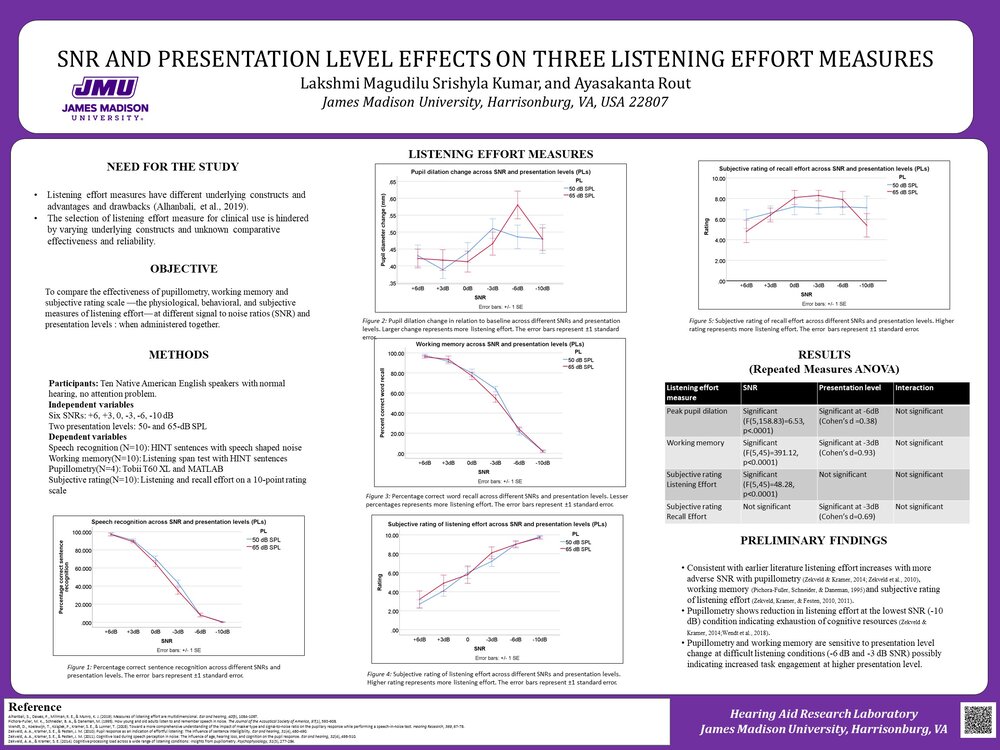Comparing the effectiveness of three listening effort measures in normal hearing individuals
Communication Sciences and Disorders: Doctor of Philosophy
Advisor: Dr. Ayasakanta Rout
Background Listening effort measures can quantify the influence of cognitive capacity and motivation on speech recognition. The main objective of this study is to compare the effectiveness of pupillometry, working memory and subjective rating scale —the three measures of listening effort in normal hearing individuals. Methods Ten normal-hearing individuals with mean age 21 years participated in the study. We examined how Signal to Noise Ratios (SNR: +6 dB to -10 dB) and presentation levels (PL: 50 and 65 dB) affect listening effort. Peak pupil dilation, working memory, speech recognition, and subjective rating of listening and recall effort were measured for each condition using Tobii eye-tracker, HINT sentences and effort questionnaire. Results Two-way rmANOVAs were conducted for each dependent variable. Pupil dilation and recall effort measures showed increase in listening effort as speech understanding reduced but showed a drop in listening effort at very difficult condition where speech understanding was close to zero indicating reduced motivation. The working memory and subjective rating of listening effort were not affected by motivation. The listening effort measured by working memory and subjective rating of listening effort was significantly higher at 65 dB and -3 dB SNR. This increase in effort for loud sounds may be because of the 9% lower speech understanding at 65 dB. The listening effort measured by pupillometry was significantly higher at 65 dB PL and -6 dB SNR indicating increased attention to loud sounds, given the speech understanding was same for both presentation levels. Conclusion All listening effort measures were sensitive to SNR and presentation level changes. Working memory was the most efficient measure followed by pupil dilation and subjective rating of listening and recall effort. Currently there are no standardized measures of listening effort for clinical use. This study provides a comparison of the listening effort tools and in future may facilitate appropriate tool selection for clinical use.

